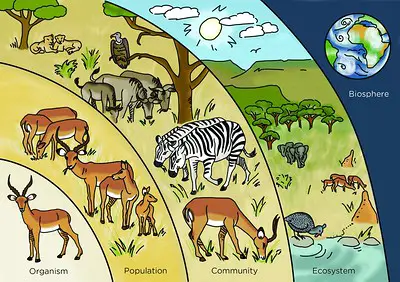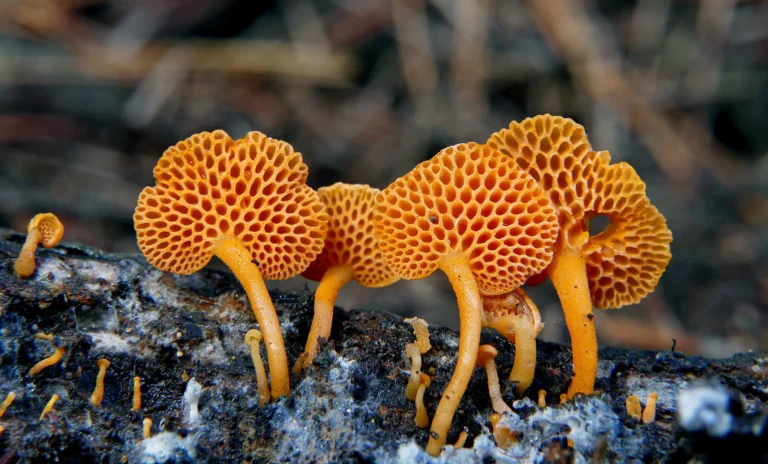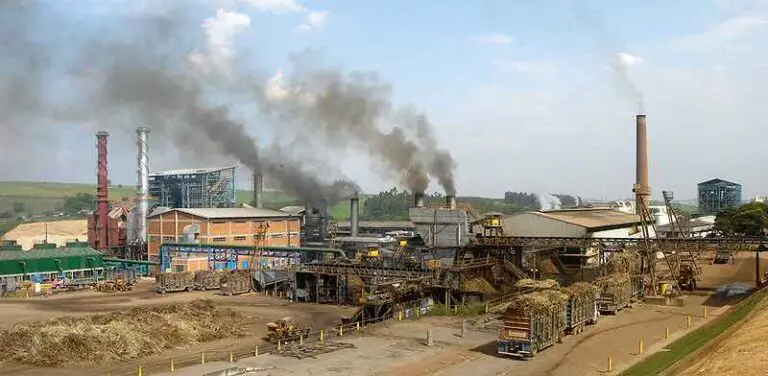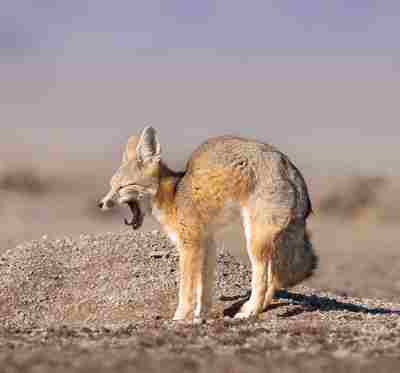Biotic Factors Definition, Comparison and Effects Explained
Biotic factors are organisms, materials and processes that are of biological origin and composition in an ecosystem. This article discusses biotic factors definition, comparison and effects, as outlined below;
-Biotic Factors Definition: 3 Ways to Define Biotic Factors
-Relationship and Interactions Between Abiotic and Biotic Factors
-Effects of Biotic Factors on the Ecosystem
Biotic Factors Definition: 3 Ways to Define Biotic Factors
Biotic factors refer to all components or elements of an ecosystem that are organic in origin and nature; including organisms, biological processes and materials like biomass.
Some of the biological processes that can be considered biotic factors include reproduction, respiration and biodegradation; all of which are known to directly affect the survival and metabolism of living organisms.
The above biotic factors definition suggests (or rather, shows) that organisms are not the only components of an ecosystem that may be described as biotic factors. Rather, other components including processes and materials can also be biotic factors, provided they are organic in origin and nature.
Further clarity can be provided to this explanation by highlighting some relatable examples of biotic factors in an ecosystem. The alternative biotic factors definition below, does this;
Biotic factors are important aspects of an ecological environment that have organic sources and compositions, with examples including; microbes, macroorganisms, vascular plants, organic processes, and biomass.

The biotic factors in an ecosystem depend on, and actively interact with, abiotic factors. These factors (abiotic) constitute the environment in which biological organisms, materials and processes occur; and directly determine the conditions of their occurrence.
With this said, an understanding of the overall nature of ecosystems requires both biotic and abiotic factors to be discussed. This is shown in the alternative biotic factors definition below;
Biotic factors are the organic components of an ecosystem, that are in continuous, active interaction with inorganic components or abiotic factors like pH, soil, water and air; which they depend on for their survival [1].
Biotic and Abiotic Factors
Biotic factors in an ecosystem are mainly living organisms, while organic materials and processes can be viewed as secondary biotic factors.
Abiotic factors in an ecosystem are non-living, inorganic elements, which constitute the environment; its components and composition.
Biotic and abiotic factors are different in terms of their origin/source(s), composition, and role in the ecosystem.
Unlike biotic factors, abiotic factors can come from both organic and inorganic sources. An example of this is soil nutrients that originate from biomass which has broken down aa a result of microbial biodegradation [2]. While biomass, microbes and biodegradation are all biotic factors, they result in nutrients that are abiotic.
Examples of biotic and abiotic factors are; plants, animals, biological processes; organic matter (biotic); pH, temperature, air, water, soil, acidity, and humidity (abiotic).
Relationship and Interactions Between Abiotic and Biotic Factors
The relationship between biotic and abiotic factors in an ecosystem can be described as a dynamic driven by the activities of living organisms in order to survive.
These activities are in turn responsible for all important ecological phenomena including the introduction and recycling of nutrients, biomass and bioenergy.
Interactions between biotic and abiotic factors are exemplified by biological energy-transfer concepts like food chains, energy pyramids and biomass pyramids [3].
Biotic and abiotic factors are crucial as their interactions are what define the different characteristics that distinguish biomes like forests, deserts, grasslands, water bodies (freshwater ans saline) and tundras from each other.
Ecological characteristics that are directly influenced by biotic-abiotic dynamics are; climate, biodiversity, species richness, population dynamics and nutrient cycling, among others.
The role of both biotic and abiotic factors within a nutrient cycle is to control how organisms depend on each other and on their environment, and the nature of interactions that result from this dependence; including feeding relationships like parasitism, mutualism, predation and commensalism.
Examples of the relationship between biotic and abiotic factors are;
1. Organic adaptation in the form of physiological and behavioral changes
2. Environment modification by organic activities and processes like foraging and decomposition
3. Parasitic cohabitation of autotrophs with corals in marine ecosystems
4. Bioenergy and food production by solar capture and photosynthesis
5. Burrowing behavior of primary consumers in prairies and deserts

Based on their effects on the ecosystem, biotic factors can be categorized as producers, primary consumers, secondary consumers and tertiary consumers.
On the other hand, abiotic factors can be categorized based on their nature and effect(s) on the ecosystem, as physical, chemical, primary and secondary factors respectively.
Below is a table that summarizes the similarities and differences between biotic and abiotic factors in an ecosystem;
Comparison Criteria | Biotic Factors | Abiotic Factors |
Source(s) | Organic | Organic, Inorganic |
Primary Scope of Influence | Organic distribution, activities | Environmental conditions |
Categories | Producers, consumers, animals, plants, macroorganisms, microbes, organic matter, organic processes | physical, chemical, primary, secondary |
Examples | Bacteria, algae, mammals, aquatic organisms, soil microbes, reproduction, respiration, biodegradation | Soil, water, air, acidity, pH, temperature, humidity, salinity |
Interactions | Adaptation, mutation, commensalism, parasitism, predation, mutualism | Environmental modification, nutrient cycling |
Effects of Biotic Factors on the Ecosystem
Biotic factors affecting the ecosystem are those directly linked to inter-organic relationships, adaptation, biomass and species distribution.
Consumers are biotic factors that interact with producers and the environment (abiotic factors) to determine how natural resources are distributed.
Biotic factors affect biodiversity in an ecosystem by controlling the trend of natural selection, reproduction and geographic distribution of organisms.
In low-biodiversity ecosystems, the biotic factors at play include unfavorable feeding relationships among various species, low adaptation rates and low overall metabolic activity. These factors interact with harsh abiotic conditions to result in low diversity, because of the inability of several species to survive in the ecosystem.
On the other hand, ecosystems with high biodiversity are characterized by biotic factors that promote genetic speciation, adaptive mutation and inter-species dependence.
Conclusion
Biotic factors are components of the ecosystem that are of organic origin, and which play a notable role in determining the ecological attributes of their environment.
Biotic and abiotic factors include; plants, animals, biological processes; organic matter (biotic); pH, temperature, air, water, soil, acidity, and humidity (abiotic). These factors work in combination to constitute an ecosystem.
The relationship between biotic and abiotic factors can be observed in such examples as; environment modification, photosynthetic food production, and adaptive behavior.
The effects of biotic factors on the ecosystem include control of biodiversity, inter-organic relationships, adaptation, survival and reproduction rates.
References
1). Balasubramanian, A. (2008). "ECOSYSTEM AND ITS COMPONENTS." Available at: https://www.researchgate.net/publication/314213426_ECOSYSTEM_AND_ITS_COMPONENTS. (Accessed 24 April 2023).
2). Jackson, R. B.; Lajtha, K.; Hugelius, G.; Kramer, M. G.; Piñeiro, G. (2017). "The Ecology of Soil Carbon: Pools, Vulnerabilities, and Biotic and Abiotic Controls." Annual Review of Ecology Evolution and Systematics 48(1). Available at: https://doi.org/10.1146/annurev-ecolsys-112414-054234. (Accessed 24 April 2023).
3). Kemp, W. M.; Boynton, W. R. (2004). "Productivity, trophic structure, and energy flow in the steady-state ecosystems of Silver Springs, Florida." Ecological Modelling 178(1-2):43-49. Available at: https://doi.org/10.1016/j.ecolmodel.2003.12.020. (Accessed 24 April 2023).




